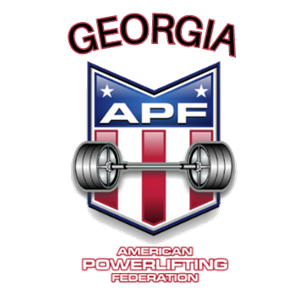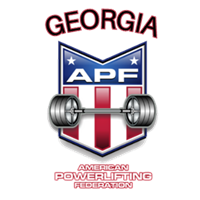Deadlifting: Strongman or Powerlifter; Who is the Strongest??
INSPIRED BY A 2022 ARTICLE BY ALEXANDER BROMLEY, A STRONGMAN ATHLETE, CLAIMING THAT “STRONGMEN ARE THE BEST DEADLIFTERS”. JON WANTED TO ADDRESS THE SUBJECT FROM THE PERSPECTIVE OF A POWERLIFTER, SOMETHING THAT BROMLEY APPEARS TO HAVE LIMITED EXPERIENCE WITH (1 MEET?)
In February 2022, former Strongman competitor and YouTuber Alexander Bromley wrote an article titled “Why Strongmen are the Best Deadlifters” on his www.empire-barbell.com website. The article is linked below. As with most things Bromley produces, this article was well written, and it is supported by evidence from the perspective of his experience and knowledge of his chosen sport: Strongman. I don’t disagree with his stance in its entirety, but I believe he is focusing on a very small snapshot of a much bigger picture.
What Alex is experiencing is technically history repeating itself, but he favors his Strongman heroes and the enormous weights they are currently pulling from the floor. This is not without bias but it’s completely understandable. He’s comparing a current powerlifting deadlift to a current strongman deadlift as a head-to-head comparison, and he implies they are the same apples to apples lift. The real question, to me, revolves mostly around whether we are comparing the same lift at all or if we’re failing to address 200+ years of this lift evolving in a way that leaves it very difficult to find similarities in execution. You see, the deadlift can be traced back to the mid 1800’s using a variety of implements. George Barker Windship was advertised as “lifting 929 pounds with his bare hands” in 1859. He developed a Strongman like deadlift machine and claims to have eventually achieved a lift as high as 2600 pounds. This appeared to be a similar partial range of motion to the Silver Dollar Deadlift contraption contested in 1980’s Strongman events.
Windship was just the beginning. The deadlift caught on by the late 19th Century as a legitimate feat of strength, but the man nicknamed “The Father of the Deadlift” was Hermann Goerner. Goerner is credited with a 793-pound deadlift in 1920 plus a variety of other deadlift variations like a 727 one handed deadlift. The difficulty then, like today, is having a true way to compare execution uniformity including starting height and lockout; a lot of deadlifts were considered complete if pulled to the knees or mid-thighs. This wasn’t a contested lift yet so there was no standardization yet regarding rules. I know the “English Deadlift” was only counted if your heels were touching and there was at least one accepted deadlift technique from Europe that only required the bar to go from the floor to the knees. Similar to comparing a modern sumo stance deadlift to a powerlifting conventional deadlift without straps (bare hands) to a Strongman deadlift with figure 8 straps, a tight lifting suit and the ability to hitch the weigh up the thighs, there was not a true way to compare these early feats of strength and conclude “who was the stronger deadlifter”.
I will not provide the entire history of the deadlift because that is well documented online, but, as Bromley correctly pointed out, it didn’t get standardized until 1964 when Powerlifting became a sanctioned AAU sport. At that point the rules were well established: the bar had to be pulled from the floor to and erect position. The lift was executed with bare hands and required to be done with no aids except lifting chalk. The bar could slow down but it could not change direction. Leaning back to “ride the bar up your thigh” and hitching, or ratcheting the bar up your legs, both resulted in a change of direction. These were violations in the “Powerlifting Rule Book”. An interesting side note is that the world record deadlift progressed at a snail's pace. Don Cundy pulled the first 800-pound deadlift in history in 1969. It took 13 years for Danny Wohleber to crack the 900 barrier in 1982. A decade later the record still hadn’t gone higher than Gary Heisey’s 925 (10 years to increase by 25 pounds). In 2002, Andy Bolton did a 927 and 4 years later Andy became the first man in history to lift 1000 pounds in competition, a feat previously thought of as nearly impossible. By this time there were some decent deadlift suits that offered tightness and assisted in lifting the weight for some lifters so it might be tough to compare some of these lifts without adding an asterisk. Nonetheless, Big Benedikt Magnusson closed the door on this Powerlifting world record where it still remains today. In 2011 he pulled a 1015 with technical proficiency, barehanded and without a lifting suit (raw). This will be a tough record to surpass and should probably be viewed at the greatest deadlift in history. Please note that this lift took 42 years to increase from 801 to 1015 pounds, or roughly 5 pounds per year, under the same uniform rules of execution.
Of course, The World's Strongest Man concept by David Webster was developed and implemented in 1977. This version of the sport was a little different than the current one with athletes from many strength sports being invited to participate. There were Powerlifters, Weightlifters, Throwers, Bodybuilders and even some NFL Lineman. The events were varied with some static events and others that required more movement and conditioning so a true, versatile World's Strongest Man could be established. By the early 1980’s it was starting to attract monsters like Bill Kazmier and, coming from Powerlifting, Bill did a 1055 Silver Dollar Deadlift. These early events had car deadlifts and variations of deadlifts but nothing resembling what Powerlifters were performing in competition. As a comparison, Kaz pulled an official 886 in competition and a 900 in exhibition with the aid of lifting straps. Fast forward to 1995 and the formation of IFSA (International Federation of Strength Athletes) and the more modern format of the World's Strongest Man. This became highly televised on ESPN and eventually CBS and shot the status of the sport to the next level. With popularity came bigger sponsors like Budweiser and more prize money. The sport was attracting larger athletes with better genetics and more talent. At this time, however, deadlift “events” were being seen regularly but I don’t recall a lot of regulation barbell deadlifts being a staple yet.
By the early 2000’s, Strongman was really drawing some physical specimens from around the world. Some of the strongest men in the U.S.A. were probably playing in the NFL (many of these linemen could rewrite the record books in strength sports if they trained for it) but Strongman was starting to have good payouts, so it was a definite draw for large, strong athletes. It seems that this is when the barbell deadlift at regulation height started to up in the sport. Whether a maximum lift or a deadlift for reps, competitors took advantage of cloth lifting straps to aid their grip and many used a segmented hitching motion to maximize leverage. Why not? It’s legal in that sport.
Powerlifters are strong in the deadlift. Strongman competitors are strong in the deadlift. George Windship was strong in the deadlift in 1859. Hermann Goerner was an incredible deadlifter in 1920. The only disclaimer has to be that none of the above were/are contesting the same lifts so making a blanket comment like “Strongmen are the Best Deadlifters” isn’t an accurate claim. Another great example of how athletes compare is to look at athletes that have competed in both sports like Game of Thrones Hafthor Bjornsson who currently holds the Strongman World Record with straps and a suit @ 1104. Around that same time, he did a sanctioned powerlifting contest and successfully pulled 903 pounds. He had 948 moving well before losing his grip on the ponderous poundage. These are both big contest deadlifts and a 903 is still a huge conventional pull. I agree with Bromley that the human hand is the weak link in PL deadlifts, but it is a nearly 50-year-old standard that thousands of athletes have competed under. Straps make deadlifting more fun; this is proven when you reverse things and a world class deadlifter like J.F. Caron, who has an 859 raw PR in Powerlifting, can do a 1021 Elephant Bar deadlift with straps and different rules of execution, in Strongman (he did not use a lifting suit).
One of Alexander’s statements to validate why Strongmen are better deadlifters is that they are often doing a lot more hip and back fatiguing movements before they deadlift. I guess this could be accurate depending on the sequence of events as many of the carries and overhead presses, etc. require full body effort. However, Powerlifting is a 3-lift sport. We can’t just pull a few random deadlift specialists out because they are the exception and not the rule. In fact, a deadlift specialist isn’t a Powerlifter any more than a cyclist is a triathlete. Three heavy squats are pretty taxing on your body, but I might argue that locking in to a good tight benchpress position and driving a weight to lockout puts more stress on the lower back than either of the other two Powerlifts. Pulling some heavy deadlifts afterward is pretty rough and takes a similar grit and testicular fortitude as it does for Strongmen. I’ve never participated in a Strongman event so I can’t personally compare them but I’m sure the entire body is wrecked similarly by both sports. Trying to state who is more battered and has accumulated the greatest fatigue is very short sighted and overlooks many important individual variables.
To wrap up, I will concede that Strongman has attracted bigger and better athletes over the last 10 years and it’s no surprise how unbelievably strong they are. It’s fun to watch and the deadlifts, though performed differently, are still insane. I greatly appreciate Strongman not allowing the sumo deadlift to creep into sport. I internally battle the very nature of the sport of Powerlifting and do not endorse making rules against anatomical leverage advantages but some of these sumo deadlifts with specialized deadlift bars have become hard to witness. I don’t think a lifter should have to bench close grip versus wide or use a narrow squat stance if they prefer a wide squat stance and I believe both low bar and high bar squats are a personal choice. To eliminate sumo, though the lift has become quite manipulated, would be a step toward the end of Powerlifting as we know it. I do not believe that Strongmen are better deadlifters that Powerlifters; they are just doing a different event.

